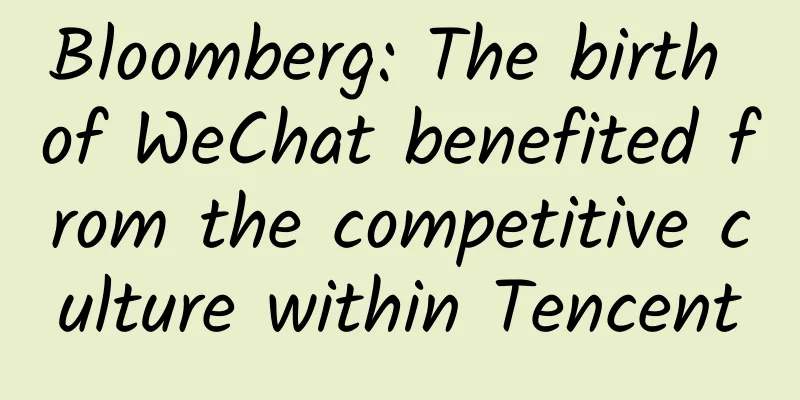Is Meizu mobile phone still alive? Does it have a chance to rise again?

|
On Weibo, there is a classic question with a playful tone: Did Sony go bankrupt today? The answer is of course no, this is just a joke from Sony fans. However, if we replace the subject Sony with Meizu, the question immediately becomes serious - because it would be something that is infinitely close to the truth. It is hard to imagine that Meizu, a domestic mobile phone manufacturer that was once praised as the Murong of the South and the Qiao Feng of the North and was on par with Xiaomi, has ended up in such a bleak situation. In September this year, after 1,269 days and nights away, Meizu suddenly announced its return. However, more than a month has passed, and apart from a pair of TWS headphones, Meizu has not made any more announcements on its products. Compared to the long silence of Meizu, domestic mobile phone manufacturers are making a lot of noise. Xiaomi launched the MIX 4, which is aimed at high-end models and achieved ideal results. OPPO has launched the sequels of the Find series and Reno series. VIVO is not far behind and launched the X70 series. Honor, which separated from Huawei, quickly launched the new product Magic 3 in the hope of occupying the high-end market... While the domestic mobile phone market is booming, Meizu has disappeared. Meizu has no place in major sales charts, new product launches, and annual reviews. Meizu's repeated absence has made Kerosene (a nickname for Meizu fans) ask, "Meizu, is it still alive?" Over the past decade, "Zhuhai Light" has become "Zhuhai Small Factory"In today's mobile phone market, with Apple and Samsung outside and Xiaomi, OPPO and Vivo inside, where does Meizu rank? It is indeed difficult to answer. What makes Meizu even more embarrassed is that Meizu, once known as the most popular mobile phone among young people, has been forgotten by young people. When asked about Meizu, they all feel very unfamiliar and even shake their heads and ask: What is this? But more than a decade ago, in the "wild era" of domestic smartphones, Meizu won the love of many young people with its exquisite and artistic UI design, smooth Flyme system, extreme quality control and unique style. Not only does it have tens of millions of fans, it has also successfully become the world's first mobile phone company with a fan culture - it is no exaggeration to say that in front of Mi fans, you can say: "In terms of seniority, I am the best." Meizu was so prosperous at that time. In 2009, Meizu M8 was launched. It reached its peak right after its debut, with sales reaching 100,000 units within two months and sales exceeding 500 million within five months. In 2014, Meizu launched the Meizu Blue Note series. The cost-effective products and outstanding appearance design, which are in line with the positioning of young audiences, have made it widely popular in the market. In 2015-2016, the sales volume of Meizu's entire series maintained a high level of tens of millions, and the overall sales were on a high trend. However, all this began to take a sharp turn for the worse after 2017, with the drastic changes in Meizu itself and external competition. In just a few years, Meizu went from its heyday to decline, from the "Light of Zhuhai" to the "small factory in Zhuhai". Some people say, "Meizu and Xiaomi used to be the most popular domestic mobile phone brands among young people. In the early days, Meizu could suppress Xiaomi, but now Xiaomi ranks among the top five in the Chinese market, transforming from low-end phones to mid-to-high-end phones, and even challenging Apple and Huawei. In this mid-game battle concerning the rise of domestic mobile phones, Meizu eventually disappeared. Indeed, it is hard to find Meizu offline now. In the huge cities of Beijing and Shanghai, there are only a handful of Meizu stores. Even in Shenzhen's Huaqiangbei market, second-hand vendors sneer at Meizu phones. The reason is simple: a phone without a market and demand will not be popular no matter where it is. This was once the earliest Internet mobile phone brand, the first domestic brand to produce touch-screen smartphones, and a brand that once boasted "We will not be the Apple of China, but the Meizu of the world". However, it has now been marginalized and its profit in the Chinese market is almost negligible. Meizu eventually fell from being a king to being just an ordinary person. Huang Zhang is the reason for his success and failureMeizu has experienced ups and downs over the past decade, with both its glory days and its close calls. Today, Meizu's decline is caused by many factors, but the dominant reason is ultimately Meizu's boss Huang Zhang. 1. Paranoid leader In the mobile phone industry, everyone jokingly calls Huang Zhang a "carpenter." It is said that in his beloved villa, most of the furniture, from selection to production, was completed by him personally. This paranoid personality is also fully reflected in his understanding of products and business. Most mobile phone manufacturers pay more attention to overcoming technological shortcomings and work hard on hardware, the so-called "polishing". Huawei firmly believes that mobile phones are an extension of communication technology. Therefore, it focuses on developing its own technological advantages. By deploying Kirin chips and Hongmeng systems, it has leapt into the ranks of the world's top players. OPPO and vivo, two brands that were once known as "factory girl phones" and focused on the third-tier market, are also well aware that with the development of the intelligent era, hard technology is the key, and they have stepped up the research and development of core technologies such as chips in order to make every effort to make progress in the market. But compared with other domestic mobile phone manufacturers, Huang Zhang attaches too much importance to "soft power" and regards Meizu mobile phones as works of art, emphasizing the presentation of visual effects and comfortable touch. In many cases, he regards the standard products provided by the supply chain as "garbage", believing that what users need is a "customized product." What is even more puzzling is that when all mobile phone manufacturers rely on Qualcomm and Meizu does not have a stable source of high-end chips, it arbitrarily attacks it and turns to MediaTek. The result? The "arrogant" Meizu wasted several years, retreated from the golden stage of the industry's development, and handed over the market to others. 2. Cluttered product lines The success of Redmi made Huang Zhang smell the huge potential of the mid-to-low-end market, and he developed the Meizu Note series. Especially after receiving investment from Alibaba, he expanded it aggressively and implemented the strategy of launching a large number of products. In 2016, Meizu held 11 press conferences, launched 14 new models, and invited dozens of celebrities to attend. Although netizens jokingly called it a "concert", this move did contribute to Meizu's record-breaking annual sales of 22 million units. However, this disorderly expansion has made the brand itself overwhelmed. The nesting doll-like models have dazzled users, overdrawn their passion, and created a wait-and-see attitude, which has laid the groundwork for dismal sales in the following year. However, Huang Zhang did not think this was a strategic issue. Although Meizu Blue had begun to show signs of fatigue, the best strategy at the time should have been to unify Meizu Blue's style by streamlining the models and consolidate Meizu Blue's user market in order to compete with Xiaomi and continue to enjoy the dividends brought by Meizu Blue's market. However, Meizu's head Huang Zhang's "impulsive thinking" caused Meizu Blue to lose its original low-end market share. He cut off the Meizu Blue sub-brand without any warning and said that "Meizu only makes flagship phones and popular phones." Meizu wants to seize the mid-to-high-end market. I'm afraid Xiaomi at that time could not have imagined that Meizu Blue, which was coming in with such great momentum, would eventually withdraw completely. It originally thought that a fierce battle was inevitable, but because of Huang Zhang's "high spirits", it was able to gain a firm foothold in the market without moving a single soldier. But is it so easy to enter the mid-to-high-end smartphone market? Perhaps Huang Zhang had never thought about it, or perhaps Huang Zhang thought that Meizu's so-called advanced concepts and unique designs were enough to attract high-end users? Therefore, Meizu abandoned the low-end young market, which it had not yet fully established, and was eager to move towards the high-end market. What's the result? The result is that after the launch of the Meizu 18 series, while friendly competitors continued to issue good news, Meizu has not announced specific sales figures for a long time. In fact, without sufficient underlying technology to support the product, all the concepts based on it are meaningless. Huawei has lost the core competitiveness of its own chips. Even if its software is good and its concept is advanced, it still cannot escape the fate of a sharp decline in market share. If Huawei can't do it, how can you, Meizu, do it? All I can say is that Meizu really has "ambitions as high as the sky, but a life as fragile as paper". The affordable Meizu Blue had a perfect start but was abandoned halfway, and the high-end Meizu brand only talked about software concepts but failed to establish itself. Trying to please neither side and suffering from both ends is a true reflection of Meizu's development in recent years. Does Meizu mobile phone still have a chance?Does Meizu mobile phone still have a chance? This is not only a question from the oil fans to Meizu, but also a question from Meizu to itself. It is for this reason that Meizu is constantly trying to find a way to "survive". In March of this year, Meizu cancelled built-in advertisements on its 18 series of smartphones and introduced the slogan of "zero ads, zero push, and zero pre-installation". The Meizu 18 series also became the first smartphone series equipped with the "three zero system". "This is an important decision that Meizu made when it turned 18," said Wan Zhiqiang, head of Meizu Technology Marketing. The traditional mobile phone industry has long entered a red ocean, and it is difficult for each company to maximize its differentiation. Meizu needs to find the deepest pain points in the mobile phone industry and the most original needs of users. This is indeed a strong pain point for users. The pure system enjoyed by Apple users has always been unattainable by the Android system. However, when Meizu disclosed the prices of the 18 series starting at 4,399 yuan and the Pro series starting at 4,999 yuan, there was immediately no cheering at the scene. This path failed under the silent gaze of consumers. If you buy a pure system at a price 700 yuan higher than that of the Meizu 17 series, then this pain point will not seem so painful. On September 22, 2021, Meizu launched three new models under the name of "Something", including Meizu 18S, Meizu 18S Pro, and Meizu 18X, as well as multiple peripheral products and a large number of smart devices. This is Meizu's second attempt this year, and it launched three new models at once in a way of accumulating strength over time. However, the cold market figures did not bring the expected feedback, but were even more embarrassing than expected. Some people even said: "With the performance of Meizu this year, it is not an exaggeration to say that it is a third-rate manufacturer." According to the sales of Meizu 18X, Meizu 18s and Meizu 18sPro in Tokyo on October 12, Meizu 18X had the least sales, only 1506; Meizu 18sPro had sales of 2530; Meizu 18s had the most sales of 4665. In 20 days, the total sales of the three new models did not even break 10,000, which shows how difficult Meizu is today. This also indicates that Meizu's second attempt has also failed. At least so far, Meizu has not found the right direction to "survive".The market is always cold, and the market in the technology industry is even more ruthless. If you fail to keep up with the times, you will be abandoned by users in just a few months. Meizu has been at the forefront of the trend time and time again, and had the opportunity to become the number one domestic mobile phone brand, and had the opportunity to develop from "small and beautiful" to "big and great". However, whenever the times choose to go left, Meizu always chooses to go right. Perhaps it is this inappropriate "paranoia" that has quietly branded Meizu with this unfortunate fate that makes people sigh. As a winner of Toutiao's Qingyun Plan and Baijiahao's Bai+ Plan, the 2019 Baidu Digital Author of the Year, the Baijiahao's Most Popular Author in the Technology Field, the 2019 Sogou Technology and Culture Author, and the 2021 Baijiahao Quarterly Influential Creator, he has won many awards, including the 2013 Sohu Best Industry Media Person, the 2015 China New Media Entrepreneurship Competition Beijing Third Place, the 2015 Guangmang Experience Award, the 2015 China New Media Entrepreneurship Competition Finals Third Place, and the 2018 Baidu Dynamic Annual Powerful Celebrity. |
>>: Luo Yonghao's Craftsman Rhapsody: A Mobile Phone War Aiming at "Feelings"
Recommend
300 tons of near-Earth delivery? In the era of space exploration, how much more powerful will future rockets be?
Recently, Musk, CEO of SpaceX, announced that Sta...
How to attract traffic to Toutiao today? Violent traffic diversion methods for headlines
When it comes to traffic, we naturally think of D...
Who can be trusted in home entertainment? The key to smart living room is to return to the essence
That's right, the intelligent transformation ...
Alipay, NetEase and others’ “year-end review” H5 operation routines
As the year draws to a close and the new year beg...
The rise of the “leaseback model”: a new variant of cash loans?
At the end of last year, after the regulation of ...
Juefei Technology Completes A+ Round of Financing Autonomous Driving Full-Scenario Data Platform Enables Digital Upgrade of Vehicle-Road Collaboration
Recently, Juefei Technology announced that it has...
The four magic weapons for good APP promotion: armor, weapons, martial arts, and war horses
1. What is Internet Promotion? Promoters use the ...
JAC officially signed a contract with Huawei to cooperate in car manufacturing. What do you think of Huawei's car series?
For the current new energy vehicle market, Huawei...
How to increase the volume of the second-level bidding ocpc? Master 3 directions
When Baidu ocpc was first promoted in 2018, not m...
“Chart manipulation” has enabled Yin Yue Tai to develop a fan business, but can it support a Chinese version of Billboard?
How crazy are Lu Han’s fans? Douban user Vivian d...
How much does it cost to join a catering mini program in Hailar?
How much does it cost to join a catering mini pro...
Why do you always want to eat? You may be controlled by your gut bacteria!
Have you ever had this experience: you just finis...
Pressure valve frozen! Countdown stuck at -40 seconds, SpaceX "Starship" launch plan delayed
At about 8:10 a.m. Central Time on April 17, Spac...
Tencent's internal test is exposed, is the hand-swipe payment coming? Industry experts: The application prospects are not optimistic
"If you can pay by swiping your palm, you wi...
The latest list of sealed-off communities in Shenyang in 2022: Which specific communities need to be quarantined? Attached is the latest news!
Recently, new cases have appeared in some areas o...









